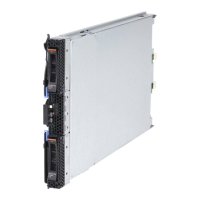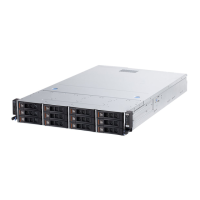20 IBM eX5 Implementation Guide
Figure 2-3 Independent processor buses, as in the x3850 M2 and x3950 M2
Instead of a parallel bus connecting the processors to a core chip set, which functions as both
a memory and I/O controller, the Xeon 6500 and 7500 family processors implemented in IBM
eX5 servers include a separate memory controller to each processor. Processor-to-processor
communications are carried over shared-clock, or
coherent QPI links, and I/O is transported
over
non-coherent QPI links through I/O hubs. Figure 2-4 shows this information.
Figure 2-4 Figure 2-4 QPI, as used in the eX5 portfolio
In previous designs, the entire range of memory was accessible through the core chip set by
each processor, a shared memory architecture. This design creates a non-uniform memory
access (NUMA) system, in which part of the memory is directly connected to the processor
where a given thread is running, and the rest must be accessed over a QPI link through
another processor. Similarly, I/O can be local to a processor, or remote through another
processor.
For QPI use, Intel has modified the MESI cache coherence protocol to include a forwarding
state, so when a processor asks to copy a shared cache line, only one other processor
responds.
For more information about QPI, go to the following website:
http://www.intel.com/technology/quickpath/
Memory I/O
Processor ProcessorProcessor Processor
Core Chip set
I/O Hub
Processor Processor
Processor Processor
I/O Hub
Memory
I/O
I/O
Memory
Memory Memory

